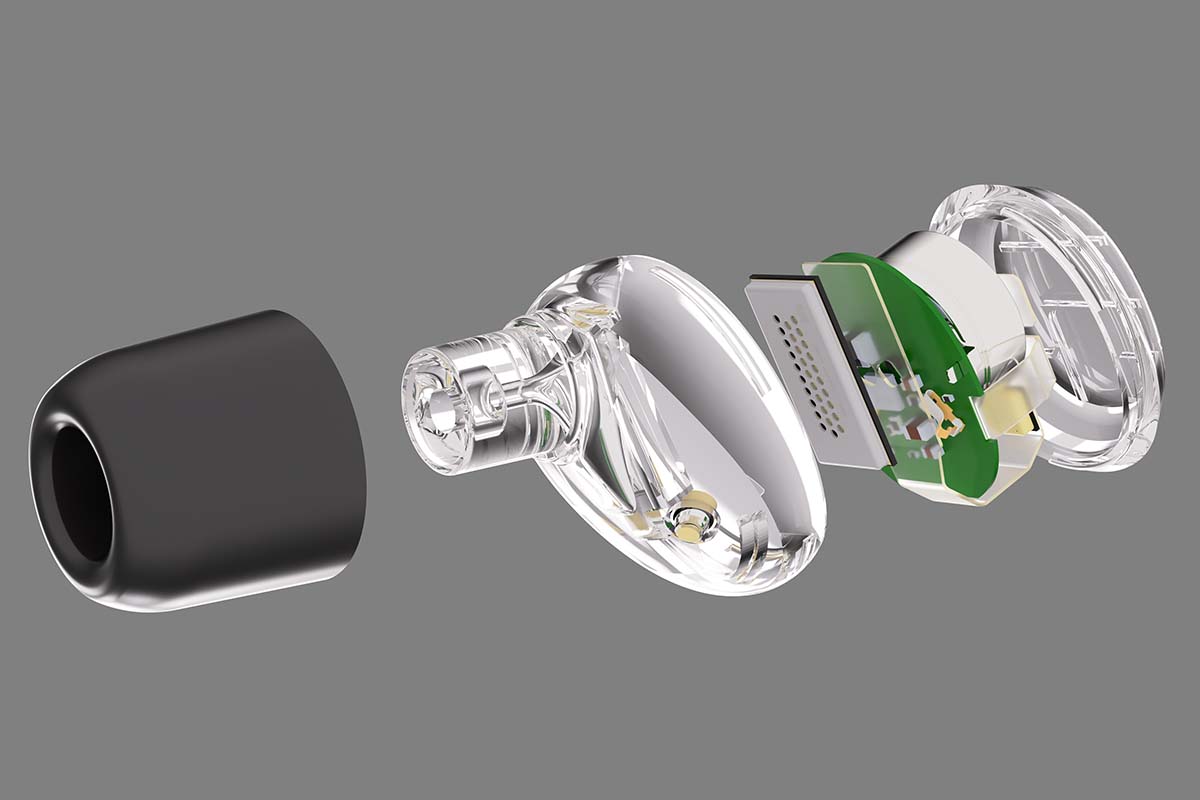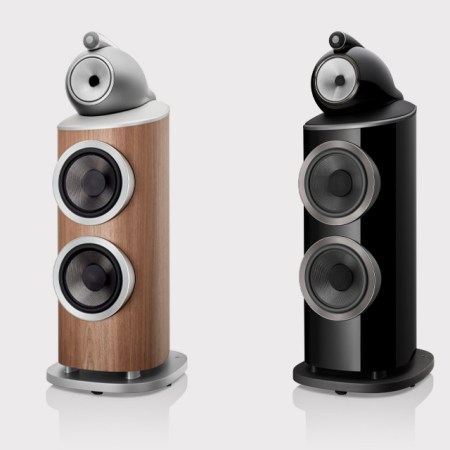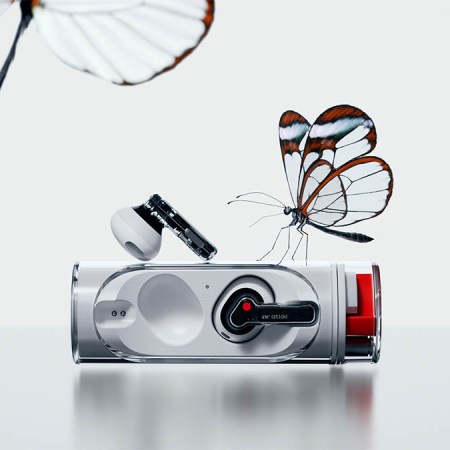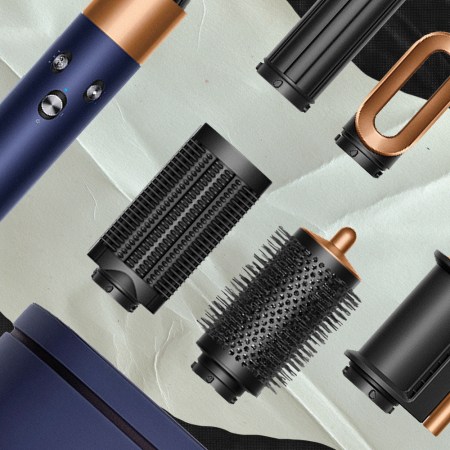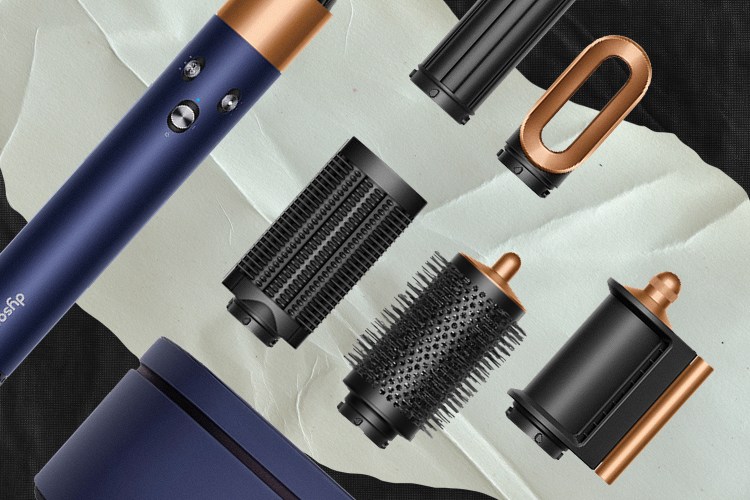“We’re on a mission to disrupt a century-old audio system.”
That’s a bold claim from Mike Housholder, VP of Marketing and Business Development of xMEMS. But that Santa Clara-based tech company, launched in 2018, thinks they’ve found a way to permanently alter consumer audio, in the same way high-definition disrupted television.
And that’s through an array of silicon-based speaker technology. The tech here (“Solid-State Fidelity,” “DynamicVent”) could change both how you listen to music and the hardware that delivers the sound.
I visited it with Housholder and the xMEMS team earlier this spring — not in a studio or professional audio space, but rather in a nondescript conference room in midtown Manhattan. I saw a slideshow and heard a few things through makeshift gear, some of which were 3-D printed just for demonstration.
I wish I could tell you what I heard was going to change the world. But instead, I simply heard promise: The promise of audiophile-quality sound in sub-$200 earbuds, cheap speakers and even hearing aids.
What Does Music Taste Like? This Group Will Show You.
How one New York organization is enhancing wine tastings with scientifically-designed playlists — and making your drink betterIt’s a daunting goal, but we’re only now seeing the first few audio products utilizing xMEMS tech coming to the mass market.
So, what exactly is a “solid-state semiconductor MEMS speaker” anyway?
Let’s start with the basics: MEMS stands for “micro-electromechanical systems.” These are tiny devices or systems that combine mechanical and electrical components. xMEMS (the company) is a chip and semiconductor company that’s building these unique systems, which are already in a lot of consumer electronic devices.
But now we’re seeing the first use of MEMS in audio. Specifically, in true wireless (TWS) earphones, in-ear-monitors (IEMs), digital hearing aids, and, potentially, smart glasses and sleep buds.
There’s a lot to like about the tech, which would replace the coil speaker systems that most audio products have utilized since the early 20th century. xMEMS is utilizing an all-silicon solution. “Silicon membranes offer far better material stiffness and exponentially faster impulse response than conventional speakers,” as Housholder notes. As well, these all-silicon micro-speakers are about one-tenth the weight and 40% the size of a similar coil speaker. And they excel at high-frequency fidelity.
And then there’s DynamicVent technology, which blends the benefits of open-and closed-fit earbuds and hearing aids. “Essentially, our speakers actually ‘breathe,’” Housholder explains. “There’s less pressure in the ear canal, and it allows for longer-listening comfort. For example, you won’t hear yourself breathe or your own footsteps when you’re in noise cancellation mode.”
There’s a lot of technical talk behind all of this, but to sum it up: This solid-state technology will improve your audio’s clarity, and it’ll be easier for manufacturers to create these audio systems on a mass scale with readily-available materials. “Coil speakers, that’s a labor-intensive process,” says Housholder. “We can build in mass with tens of workers, not thousands.”
Right now only a few companies have come to market with xMEMS tech, but Housholder suggests that there are about 20 others in the queue to launch this year. It’s not quite making it to the Apples or Samsungs of the world yet, but “there isn’t a known audio brand that doesn’t have our parts right now,” says Housholder. “I think by 2025 you’ll see pretty heavy industry adaptation.”
Three xMEMS products launched this spring: Cowell (the world’s smallest solid-state microspeaker, for use in TWS earphones and hearing aids); Montara Plus (a micro-speaker for in-ear monitors); and Skyline DynamicVent (the world’s first piezoMEMS, DSP-controllable vent blends the benefits of open and closed-fit earbuds and hearing aids, as described above).
Will this new solid-state tech succeed? It has already in one category: microphones. MEMS microphones accounted for just 5% of the microphone market in 2007; today, that share is over 80%. But you probably wouldn’t know it just looking at a description of a mic on, say, Amazon’s website.
Meaning, the shift to MEMS technology in personal audio isn’t something you’re going to really, um, hear about. It’ll all take place behind the scenes (or behind the earbud). Consider it a stealthily quiet takeover.
“The shift to MEMS is inevitable in the audio world,” says Housholder. “The quality teams want it, the procurement teams want it, and the audio teams just want everything to sound better. And that’s what this technology does.”
This article appeared in an InsideHook newsletter. Sign up for free to get more on travel, wellness, style, drinking, and culture.
